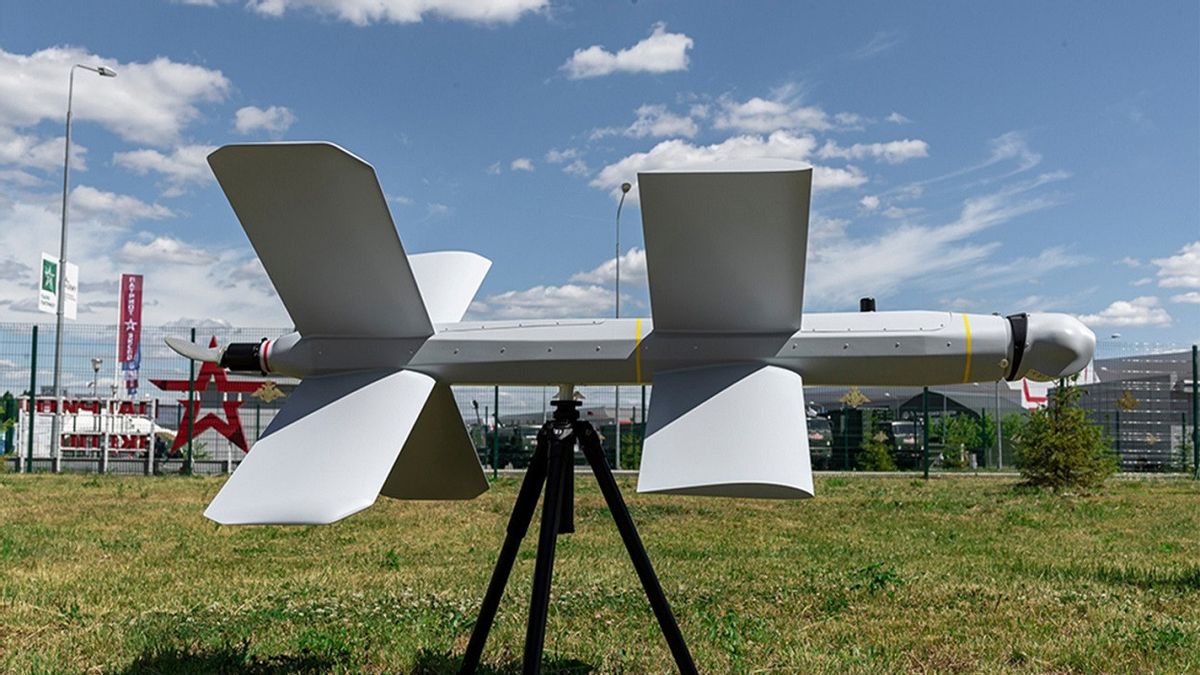Russia’s Lancet-3 kamikaze drone (or loitering munition) seems to have met its match – a simple camouflage net. Videos and photos from the frontlines in Ukraine showed the unmanned aerial vehicle (UAV) stuck in the net over Ukrainian tanks, failing to impact the vehicles.
This contrasts with the metallic roof covering Russian tanks that could not withstand Javelin and NLAW anti-tank guided missile (ATGM) hits earlier in the war.
Simple Net For Pesky Drone
The latest images showed a Lancet-3 entangled in a “metal mesh” over a Polish 155-mm Krab Self-Propelled Gun (SPG). Another video from December last year showed a Russian Lancet-3 stuck in a net covering a Ukrainian T-72 tank.
The net in this video doesn’t appear metallic but camouflaged netting made of high-strength polyester.
“It is necessary to attack with a drone not on the roof of the hull, but on the forehead or from the rear,” said the message on a Telegram group that covers the war from the Ukrainian perspective.
Lancet-3 drones being able to take out SPGs is not unlikely since the artillery systems are not as heavily armored as MBTs. Any additional armor plating on an SPG will add to the existing weight because of the onboard artillery gun.
Can Lancet-3 Destroy SPGs?
Publicity material from Russia’s Ministry of Defense (MoD) over the last several months showing Lancets hitting Ukrainian ground targets, particularly radars and artillery like the US M777, also shows them striking SPGs.
#Russian kamikaze drone "Lancet-3" hit #Ukraine️ army self-propelled howitzer pic.twitter.com/b4J1vlFGtB
— Middle East Update (@islamicworldupd) January 24, 2023
One such video posted on Twitter showed a Lancet-3 striking an SPG in the manner recommended above – it flew in from a slight angle from behind and hit the rear. The feed from the overhead drone recording the strike did not show the fate of the SPG or the Ukrainian crew inside.
It can be safely assumed that the strike must have been enough to disable the SPG by destroying the engine or burning critical systems.
This damage allows the gun to be used continually but without mobility – eliminating its utility as mobile artillery. The crew, in such cases, can keep firing until the ammunition is exhausted but will have to abandon the SPG eventually.

But this is assuming the SPG was meant to stay there for a prolonged time, which is unlikely. Being an SPG, it must have been supposed to ‘scoot’ from the location in the frontlines to a safer place in the rear after ‘shooting’ its rounds as per a fire plan before becoming a target for Russian counter-battery fire.
The Lancet-3 can be used for moving targets, even more so for large vehicles like SPGs, since they are not very agile and maneuverable like a car.
Thus, the SPG in this video must have been significantly damaged. Even a hit in the front of the turret can cause fires that can cause secondary explosions that ignite the ammunition. But the Lancet-3s stuck in the nettings must have been carelessly operated, or the targets not correctly identified. Usually, secondary guidance for the Lancet-3 is provided by Orlan-10 UAVs flying overhead.
According to open source military analysis portal Oryx, Ukraine lost 9 Krab self-propelled guns to Russian strikes by January 14 this year, of which seven were destroyed, and two were damaged. Poland had donated 18 to Ukraine, leaving the Polish army with 62 units.
Nets Effective Than Russia’s Overhead Metal Roofs?
The war’s early days witnessed hundreds of Russian heavy vehicles, tanks, armored fighting vehicles, and trucks being destroyed on the northern border.
Tanks had strange roofs welded over their turrets, which experts mocked as “emotional support cages,” saying they gave a false sense of security to the crew from ATGMs like Javelins and drone-fired missiles like the Turkish-made MAM-L.

The missiles hit tanks from the top, where there is no armor that causes explosions, since it instantly ignites the ammunition inside, giving the crew no time to escape.
Russian observers argued that their purpose was to ignite the missile before it hit the main turret. But a large number of tank losses indicated the technique did not work.
A Brigadier-rank Indian Army armored corps officer, who has experience with the T-72 and the T-90 tanks, believed the metallic roofs must have been a hasty solution the Russians came up with just before the war.
“They had little time to test it. The war appears to have served as a testing ground for some of their ideas and concepts, and they have naturally refined many of those,” he said.
- The author can be reached at satamp@gmail.com
- Follow EurAsian Times on Google News




